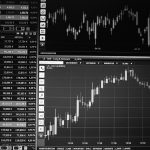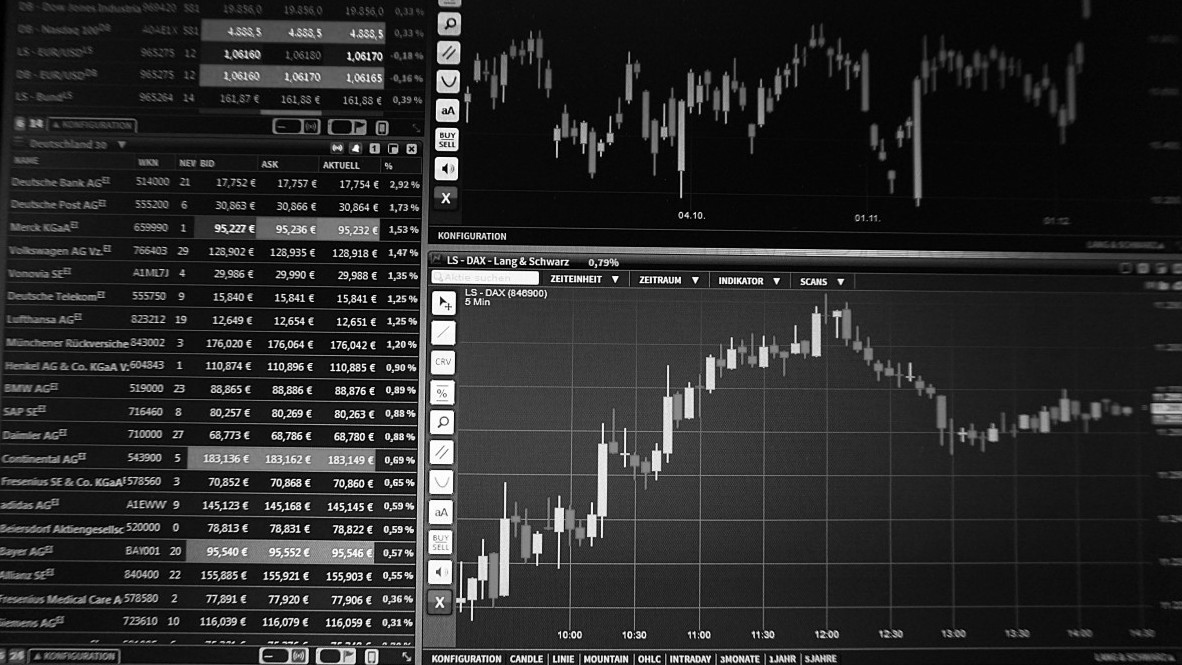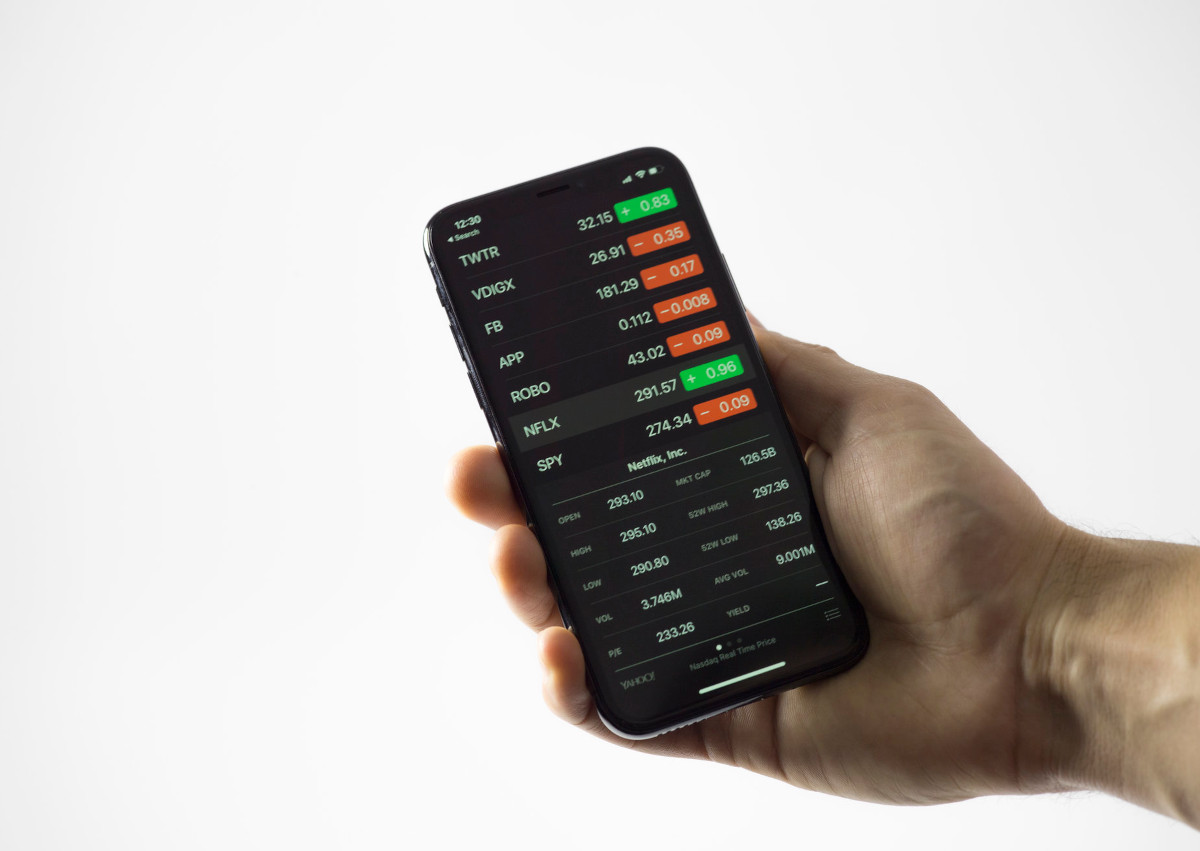(VIANEWS) – Diana Shipping (DSX), Arbor Realty Trust (ABR), John Hancock (HPF) are the highest payout ratio stocks on this list.
We have gathered information about stocks with the highest payout ratio as yet. The payout ratio in itself isn’t a guarantee of good investment but it’s an indicator of whether dividends are being paid and how the company chooses to issue them.
When investigating a potential investment, the dividend payout ratio is a good statistic to know so here are a few stocks with an above 30% percent payout ratio.
1. Diana Shipping (DSX)
100.81% Payout Ratio
Diana Shipping Inc. provides shipping transportation services. The company transports a range of dry bulk cargoes, including commodities, such as iron ore, coal, grain, and other materials in shipping routes worldwide. As of December 3, 2021, it operated a fleet of 33 dry bulk vessels, including 4 Newcastlemax, 11 Capesize, 5 Post-Panamax, 5 Kamsarmax, and 8 Panamax. The company was formerly known as Diana Shipping Investments Corp. and changed its name to Diana Shipping Inc. in February 2005. Diana Shipping Inc. was incorporated in 1999 and is based in Athens, Greece.
Earnings Per Share
As for profitability, Diana Shipping has a trailing twelve months EPS of $0.62.
PE Ratio
Diana Shipping has a trailing twelve months price to earnings ratio of 5.16. Meaning, the purchaser of the share is investing $5.16 for every dollar of annual earnings.
The company’s return on equity, which measures the profitability of a business relative to shareholder’s equity, for the twelve trailing months is 14.46%.
Volume
Today’s last reported volume for Diana Shipping is 1626000 which is 147.78% above its average volume of 656224.
Earnings Before Interest, Taxes, Depreciation, and Amortization
Diana Shipping’s EBITDA is 36.14.
2. Arbor Realty Trust (ABR)
93.22% Payout Ratio
Arbor Realty Trust, Inc. invests in a diversified portfolio of structured finance assets in the multifamily, single-family rental, and commercial real estate markets. The company operates in two segments, Structured Business and Agency Business. It primarily invests in real estate-related bridge and mezzanine loans, including junior participating interests in first mortgages, and preferred and direct equity, as well as real estate-related notes and various mortgage-related securities. The company offers bridge financing products to borrowers who seek short-term capital to be used in an acquisition of property; financing by making preferred equity investments in entities that directly or indirectly own real property; mezzanine financing in the form of loans that are subordinate to a conventional first mortgage loan and senior to the borrower's equity in a transaction; and junior participation financing in the form of a junior participating interest in the senior debt. In addition, it underwrites, originates, sells, and services multifamily mortgage loans through conduit/commercial mortgage-backed securities programs. The company qualifies as a real estate investment trust for federal income tax purposes. It generally would not be subject to federal corporate income taxes if it distributes at least 90% of its taxable income to its stockholders. The company was founded in 2003 and is headquartered in Uniondale, New York.
Earnings Per Share
As for profitability, Arbor Realty Trust has a trailing twelve months EPS of $1.77.
PE Ratio
Arbor Realty Trust has a trailing twelve months price to earnings ratio of 7.97. Meaning, the purchaser of the share is investing $7.97 for every dollar of annual earnings.
The company’s return on equity, which measures the profitability of a business relative to shareholder’s equity, for the twelve trailing months is 12.83%.
Dividend Yield
As maintained by Morningstar, Inc., the next dividend payment is on Nov 15, 2023, the estimated forward annual dividend rate is 1.72 and the estimated forward annual dividend yield is 11.75%.
Sales Growth
Arbor Realty Trust’s sales growth is negative 13.6% for the ongoing quarter and negative 10.7% for the next.
3. John Hancock (HPF)
88.21% Payout Ratio
John Hancock Preferred Income Fund II is a closed ended fixed income mutual fund launched and managed by John Hancock Investment Management LLC. It is co-managed by John Hancock Asset Management. The fund invests in the fixed income markets of the United States. It seeks to invest in securities of companies operating across diversified sectors. The fund primarily invests in preferred value stocks of companies, convertible preferred securities, and investment grade fixed-income securities rated investment grade or higher by Moody's or Standard & Poor's. It benchmarks the performance of its portfolio against the Bank of America Merrill Lynch Hybrid Preferred Securities Index and Barclays U.S. Aggregate Bond Index. John Hancock Preferred Income Fund II was formed on November 29, 2002 and is domiciled in the United States.
Earnings Per Share
As for profitability, John Hancock has a trailing twelve months EPS of $-1.16.
The company’s return on equity, which measures the profitability of a business relative to shareholder’s equity, for the twelve trailing months is negative -7.05%.
Dividend Yield
As maintained by Morningstar, Inc., the next dividend payment is on Jan 10, 2024, the estimated forward annual dividend rate is 1.48 and the estimated forward annual dividend yield is 9.25%.
Revenue Growth
Year-on-year quarterly revenue growth grew by 6.3%, now sitting on 38.1M for the twelve trailing months.
Yearly Top and Bottom Value
John Hancock’s stock is valued at $16.02 at 01:23 EST, way under its 52-week high of $17.90 and way higher than its 52-week low of $12.99.
Moving Average
John Hancock’s value is higher than its 50-day moving average of $15.03 and higher than its 200-day moving average of $14.94.
4. McCormick & Company (MKC)
64.17% Payout Ratio
McCormick & Company, Incorporated manufactures, markets, and distributes spices, seasoning mixes, condiments, and other flavorful products to the food industry. It operates in two segments, Consumer and Flavor Solutions. The Consumer segment offers spices, herbs, and seasonings, as well as condiments and sauces, and desserts. This segment markets its products under the McCormick, French's, Frank's RedHot, Lawry's, Cholula Hot Sauce, Gourmet Garden, Club House, and OLD BAY brands in the Americas; Ducros, Schwartz, Kamis, and LA Drogheria, and Vahiné brands in Europe, the Middle East, and Africa; McCormick and DaQiao brands in China; and McCormick, Aeroplane, and Gourmet Garden brands in Australia, as well as markets regional and ethnic brands, such as Zatarain's, Stubb's, Thai Kitchen, and Simply Asia. It also supplies its products under the private labels. This segment serves retailers comprising grocery, mass merchandise, warehouse clubs, discount and drug stores, and e-commerce retailers directly and indirectly through distributors and wholesale foodservice suppliers. The Flavor Solutions segment offers seasoning blends, spices and herbs, condiments, coating systems, and compound flavors to multinational food manufacturers and foodservice customers. It serves foodservice customers directly and indirectly through distributors. McCormick & Company, Incorporated was founded in 1889 and is headquartered in Hunt Valley, Maryland.
Earnings Per Share
As for profitability, McCormick & Company has a trailing twelve months EPS of $2.4.
PE Ratio
McCormick & Company has a trailing twelve months price to earnings ratio of 26.96. Meaning, the purchaser of the share is investing $26.96 for every dollar of annual earnings.
The company’s return on equity, which measures the profitability of a business relative to shareholder’s equity, for the twelve trailing months is 13.37%.
Revenue Growth
Year-on-year quarterly revenue growth grew by 5.6%, now sitting on 6.61B for the twelve trailing months.
5. Huntington Bancshares (HBAN)
50% Payout Ratio
Huntington Bancshares Incorporated operates as the bank holding company for The Huntington National Bank that provides commercial, consumer, and mortgage banking services in the United States. The company operates through four segments: Consumer and Business Banking; Commercial Banking; Vehicle Finance; and Regional Banking and The Huntington Private Client Group (RBHPCG). The Consumer and Business Banking segment offers financial products and services, such as checking accounts, savings accounts, money market accounts, certificates of deposit, credit cards, and consumer and small business loans, as well as investment products. This segment also provides mortgages, insurance, interest rate risk protection, foreign exchange, automated teller machine, and treasury management services, as well as online, mobile, and telephone banking services. It serves consumer and small business customers. The Commercial Banking segment offers regional commercial banking solutions for middle market businesses, government and public sector entities, and commercial real estate developers/REITs; and specialty banking solutions for healthcare, technology and telecommunications, franchise finance, sponsor finance, and global services industries. It also provides asset finance services; capital raising solutions, sales and trading, and corporate risk management products; institutional banking services; and treasury management services. The Vehicle Finance segment provides financing to consumers for the purchase of automobiles, light-duty trucks, recreational vehicles, and marine craft at franchised and other select dealerships, as well as to franchised dealerships for the acquisition of new and used inventory. The RBHPCG segment offers private banking, wealth and investment management, and retirement plan services. Huntington Bancshares Incorporated was founded in 1866 and is headquartered in Columbus, Ohio.
Earnings Per Share
As for profitability, Huntington Bancshares has a trailing twelve months EPS of $1.24.
PE Ratio
Huntington Bancshares has a trailing twelve months price to earnings ratio of 10.36. Meaning, the purchaser of the share is investing $10.36 for every dollar of annual earnings.
The company’s return on equity, which measures the profitability of a business relative to shareholder’s equity, for the twelve trailing months is 10.61%.
Volume
Today’s last reported volume for Huntington Bancshares is 17339700 which is 7.63% above its average volume of 16110400.
Dividend Yield
As stated by Morningstar, Inc., the next dividend payment is on Dec 14, 2023, the estimated forward annual dividend rate is 0.62 and the estimated forward annual dividend yield is 4.87%.
Sales Growth
Huntington Bancshares’s sales growth is negative 10.2% for the current quarter and negative 6.9% for the next.
Revenue Growth
Year-on-year quarterly revenue growth declined by 14.5%, now sitting on 6.96B for the twelve trailing months.
6. Lear Corporation (LEA)
32.52% Payout Ratio
Lear Corporation designs, develops, engineers, manufactures, assembles, and supplies automotive seating, and electrical distribution systems and related components for automotive original equipment manufacturers in North America, Europe, Africa, Asia, South America, and internationally. Its Seating segment offers leather and fabric products, seat covers, recliner mechanisms, seat tracks and foams, seat structures and mechanisms, and headrests for automobiles and light trucks, compact cars, and sport utility vehicles. The company's E-Systems segment offers electrical distribution systems that route electrical signals and networks, and manage electrical power within the vehicle for various powertrains, such as traditional internal combustion engine architectures, hybrid, plug-in hybrid, and battery electric architectures. This segment's products comprise wire harnesses, terminals and connectors, and junction boxes; and electronic control modules, such as body control modules, smart junction boxes, gateway modules, wireless receiver and transmitter technology, lighting control modules, audio domain controllers, amplifiers, and communication modules. It also provides electrification products comprising charging systems that include onboard charging modules and cord set charging equipment; battery electronics, which comprise battery disconnect units, cell monitoring supervisory systems, and integrated total battery control modules; and other power management modules, including converter and inverter systems. In addition, this segment offers cybersecurity software; advanced vehicle positioning for automated and autonomous driving applications; roadside modules that communicate real-time traffic information; and cellular protocols for vehicle connectivity, as well as Xevo Journeyware, a platform for the cloud, vehicles, and mobile devices; and connectivity products. The company was founded in 1917 and is headquartered in Southfield, Michigan.
Earnings Per Share
As for profitability, Lear Corporation has a trailing twelve months EPS of $9.47.
PE Ratio
Lear Corporation has a trailing twelve months price to earnings ratio of 14.35. Meaning, the purchaser of the share is investing $14.35 for every dollar of annual earnings.
The company’s return on equity, which measures the profitability of a business relative to shareholder’s equity, for the twelve trailing months is 13.6%.
Moving Average
Lear Corporation’s value is above its 50-day moving average of $134.39 and under its 200-day moving average of $136.95.
Growth Estimates Quarters
The company’s growth estimates for the present quarter and the next is 11.4% and 24.1%, respectively.
Volume
Today’s last reported volume for Lear Corporation is 598522 which is 3.19% below its average volume of 618291.
Earnings Before Interest, Taxes, Depreciation, and Amortization
Lear Corporation’s EBITDA is 26.62.
1. 1 (1)
1% Payout Ratio
1
Earnings Per Share
As for profitability, 1 has a trailing twelve months EPS of $1.
PE Ratio
1 has a trailing twelve months price to earnings ratio of 1. Meaning, the purchaser of the share is investing $1 for every dollar of annual earnings.
The company’s return on equity, which measures the profitability of a business relative to shareholder’s equity, for the twelve trailing months is 1%.
Earnings Before Interest, Taxes, Depreciation, and Amortization
1’s EBITDA is 1.
Stock Price Classification
According to the stochastic oscillator, a useful indicator of overbought and oversold conditions, 1’s stock is considered to be overbought (>=80).
Sales Growth
1’s sales growth is 1% for the current quarter and 1% for the next.
Dividend Yield
As maintained by Morningstar, Inc., the next dividend payment is on Jan 1, 1970, the estimated forward annual dividend rate is 1 and the estimated forward annual dividend yield is 1%.











